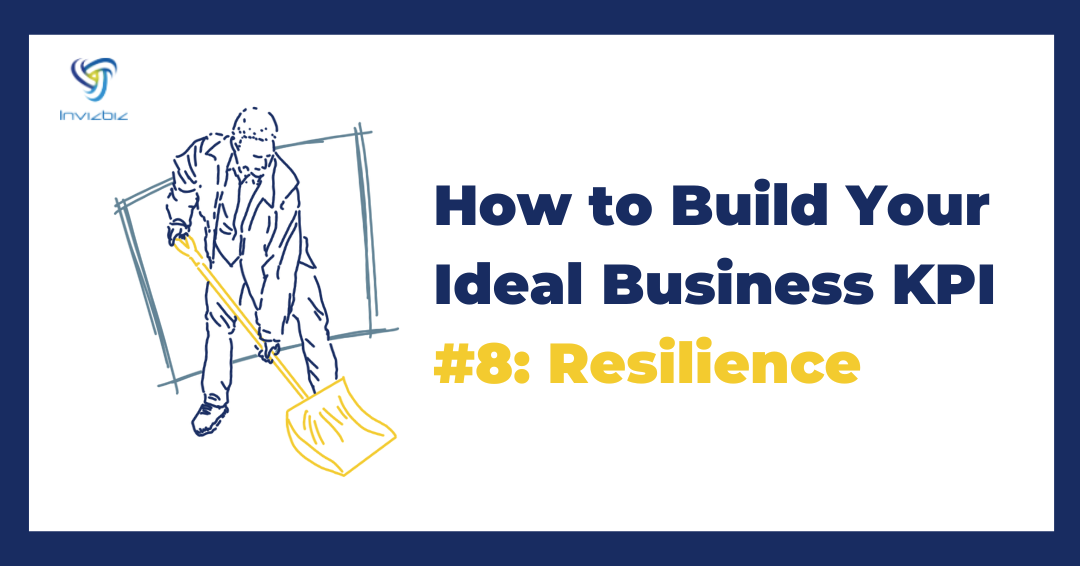While there’s no doubt that COVID-19 challenged the survival of many businesses, it also challenged the resilience of business owners.
According to Pari Namazie, a global executive coach, many business leaders are still struggling to maintain day-to-day operations and achieve high-level performance. One of her interviewees, Sussane, a C-Level executive, says that the pandemic has affected their work routine physically and mentally.
She reported that there’s increasing pressure on leaders like her to effectively monitor performance goals, manage and track a remote team, and transition effectively to a virtual setup.
Executives like Sussane are working longer hours just to adapt and keep the business afloat. This has been the impact of the recent unexpected events of COVID-19 not just on the business, but on the leaders as well.
Unfortunately, there’s no doubt that there’s always going to be another COVID-19, whether it’ll take the form of a global financial crisis, environmental event, war, or terrorist attack. Change is constant in a business, and unexpected external events can happen anywhere and anytime.
The question is, how can you transform your business to be more resilient during these events?
In this article, we’ve outlined approaches that you can implement to create a resilient business. You’ll learn the following:
- Communicating major challenges with the team
- Establishing a learning culture within your organisation
- Not putting too many eggs in one basket
- Establishing strong relationships with trusted suppliers and partners
- Evaluating the idealness of your business’ resilience
What is Resilience?
External events that can have a detrimental impact on the business can be difficult to predict and control. For example, no one knows for sure when the next pandemic, war, or recession is going to occur.
The only thing that we can do is to bolster and strengthen our business to be able to thrive during any of these events. Withstanding these events is crucial for the long-term survival and sustainability of your business.
This is where resilience comes in. Resilience is the capacity of a business to recover quickly from difficulties.
Upon building multiple ideal businesses and helping others do the same, I’ve discovered some of the key approaches you can apply to build resilience. Read further to learn more about these methods.
Engage and Communicate Major Challenges With the Team
When something occurs in a business that threatens its survival, it can be described as a “Danger Situation.”
Here are some examples of “Danger Situations” that have taken place in our businesses before:
- Cash on hand and reserves drop below the minimum acceptable level
- System issue creates chaos with bookings and payments
- Fall in sales and associated revenue over a 3-month period
- Growth of debtors and money owed to the business
- Increase in customer complaints and refunds being issued
While these are challenging and stressful situations, they provide the foundation for improvement and resilience in any business. But for this to occur, two things must take place:
- First, the “dangerous situation” must be handled and resolved effectively.
- Second, there should be a review of why the situation arose. Then, changes must be implemented to prevent its recurrence.
To do the first step, which is to resolve these issues effectively, we’ve set up a process or a tool that identifies key challenges or issues as a “dangerous” situation.
These warning tools can take the form of a statistics dashboard. The aim is to put a spotlight on the issue and raise a high alert level.
By having an appropriate warning system, all relevant team members are alerted about what is not working well. Then, they can determine the level of response needed. Once the issue has been identified, handling the situation becomes the highest priority.
After the situation is resolved, the “Danger” label can be removed. Then, the learning and improvement process can begin.
Establish a Learning Culture Within Your Organization
Have you ever wondered why your risk of failure lowers after the years pass by? Before year 1, business statistics show that your likelihood of failure is around 80%. But after year 10, the likelihood goes down to 30%.
One of the reasons for this is that as the year passes by, you can build knowledge, expertise, and resilience. You learn from business cycles and market movements which reduce the unknown.
For example, when I recall back over the decade of building Resicert, there was always a new issue popping up. But fast forward to today, fewer issues were coming out of the left field that me and my team can’t handle seamlessly.
This is because each issue that popped up was an opportunity to learn and strengthen the business. To get to a point where there is nothing new to deal with, you must establish a clear process for handling all previous challenges. This is the essence of a learning organization.
To do this, here’s what you can implement:
Resolve the Issue
Depending on the urgency and impact of the issue, get the team members skilled in the area to resolve it.
Review the Issue
Reviewing the issue is often the most overlooked step. Things go back to normal. Then, once the same event takes place again, the business goes through the same cycle.
To avoid this, here are the questions you can brainstorm with the team:
- What went wrong?
- What was missing?
- What needs to change or be implemented to avoid the recurrence of the same issue?
Create the Process for Handling It
Based on the insights gathered from reviewing the issue, create a detailed step-by-step process to handle the situation.
As you repeat the “resolve, review, and create a process” cycle, you’ll notice that as the year passes there are fewer issues to deal with. Most issues will have a clear management process that will result in stability and certainty.
Don’t Put Too Many Eggs In One Basket
Putting too many eggs in one basket makes your business extremely vulnerable, and here’s why:
Putting Eggs In One Basket
I was a part-owner in a manufacturing and construction business where we often have large contracts with few clients. The average contract value fell in the $300,000 to $500,000 mark. At any one time, a handful of clients made up over 80% of our revenue. Although it was attractive from a workflow and continuity of business, there were also some downsides.
Due to the size of the contracts, we couldn’t change the terms and the payments process which are far from ideal. In my opinion, there is too much power in the hands of these clients which brings a level of risk to the business. It was an industry with many fixed structures that made it difficult to transform into an ideal business.
As a result, we were unable to collect payments from two of our debtors. This blew a substantial hole in our cash flow which we were unable to move through. There were simply too many eggs in one basket, and the business eventually failed.
Putting Eggs In Multiple Baskets
With Resicert, our property inspection business, we have a much smaller average unit price while dealing with thousands of clients every year. Hence, no client can have a material impact on our business.
Moreover, we don’t release inspection reports unless payment has occurred which results in minimal bad debts and very strong control over our cash flow and collectibles.
This business design built a solid foundation for resilience. Now, we are less likely to have cash flow problems or an event that threatens our survival.
How To Put Eggs In Multiple Baskets
Part of building the Ideal Business Model is to identify what is acceptable to you and what you are trying to achieve. Here’s a good exercise to implement in the business.
Simply ask yourself the following questions:
- Of the money that is owed to you at any point in time, what percentage of this comes from your top 10 clients?
- If 3 of these clients did not or could not pay you, what impact would it have on your business?
- Are you happy with this?
Many businesses do not consider this at all. As a result, they end up in a situation that puts the power on their clients. It leaves the company extremely vulnerable and unable to fully recover from any shocks.
Establish Strong Relationships with Trusted Suppliers and Partners
Building and scaling a business to the multi-million dollar mark and beyond cannot be done alone. This will require input and collaboration with a range of specialist individuals and companies.
Hence, it’s important to build resilience by establishing strong relationships with trusted suppliers and partners. To do this, here’s what you need to implement.
Adopt a Long-term Partnership Philosophy
Adopting a long-term partnership philosophy is our approach to every supplier relationship. That means getting into engagements with a long-term view and strategy. This is an intelligent way to build a solid support structure that displays mutual trust and respect.
To do this, organizations and individuals you engage with must have aligned values and approaches.
Unfortunately, it will take several attempts to find the right fit long-term. It’s just part of the game that cannot be avoided. Only time and performance will tell if it works in the end.
Engage With Organisations That Operate as Partners
If you want a solid support framework during uncertainties, it’s critical to engage with organisations that operate as partners and co-entrepreneurs, rather than strictly suppliers.
Having established long-term experience with your business, your partners can provide the highest level of support in the shortest amount of time. This can make all the difference when handling unexpected situations.
How Ideal Is Your Business Resilience?
The nature of business is unpredictable. Many factors that we have no control over can negatively impact its viability and survival. The only thing that we can do is strengthen it to resist these unexpected situations.
That’s why resilience plays a fundamental role in any long-term sustainable business model. To assess whether you are a “tough-to-break” business, ask yourself the following questions:
- Do you lack clear processes for resolving issues that happened in the past?
- Do you fail to communicate major challenges with the team?
- Can one client impact the survival of your business if they don’t pay? Are you simply putting too many eggs in one basket?
- Did you fail to foster strong long-term relationships with trusted suppliers and partners?
Once you’ve contemplated upon these questions, rate how ideal your resilience is from 1-10. Take note that the more you’ve answered “yes,” the lower your score should be.
Then, ask yourself, what changes can you implement to increase the rating and improve your resilience?
If you want to follow along with the story of how I redesigned my previous business into an ideal one that allowed me to live the quality of life I wanted, sign up for our newsletter: https://idealbusiness.invizbiz.com/newsletter

